#building a character
Text
CREATING AUTHENTIC DEAF AND HARD OF HEARING CHARACTERS: A WRITER'S JOURNAL
Introduction
Creating authentic characters in your writing is essential for engaging storytelling, and this includes characters who are deaf or hard of hearing. To craft a character that accurately represents this community, it's crucial to do your research, gain a deep understanding of their experiences, and portray them with sensitivity and respect. In this journal, we'll explore how to write a deaf or hard-of-hearing character, including key information and preparation steps.
Understanding Deaf and Hard-of-Hearing Characters
Research: Start by researching deaf and hard-of-hearing individuals' experiences, challenges, and culture. Read books, articles, and personal stories, and watch documentaries or interviews featuring members of the Deaf community.
Consult with Experts: Reach out to members of the Deaf community or experts in Deaf studies to gain insights into their experiences. They can provide invaluable guidance and help you avoid common misconceptions.
Diversity Within the Community: Understand that the Deaf and hard-of-hearing communities are diverse. Some individuals communicate using sign language, while others rely on lip-reading, cochlear implants, or hearing aids. Be aware of these differences when creating your character.
Character Development
Backstory and Identity: Consider your character's background. Were they born deaf, or did they become deaf later in life? How do they identify within the Deaf community? Understanding their identity and experiences will shape their character.
Language and Communication: Decide how your character communicates. Are they fluent in sign language, or do they primarily rely on lip-reading and spoken language? Their communication style will influence their interactions with other characters.
Cultural Awareness: Explore the cultural aspects of the Deaf community. Understand the importance of Deaf culture, including its history, art, and values. Incorporate these elements into your character's life when relevant.
Writing Tips
Dialogue and Communication: When writing dialogue for a deaf or hard-of-hearing character, be mindful of their unique communication style. Use visual cues, body language, and facial expressions to convey emotions and context.
Access to Information: Consider the challenges your character may face in accessing information. This could involve issues with closed captioning, subtitles, or accommodations in educational or work settings.
Social Interactions: Depict social interactions realistically. Show how your character navigates conversations, group dynamics, and social events within their community and with hearing individuals.
Preparation
Sensitivity Readers: Consider hiring sensitivity readers who are part of the Deaf or hard-of-hearing community to review your work and provide feedback. Their insights can help you avoid stereotypes and inaccuracies.
Learn Sign Language: If your character uses sign language, take the time to learn at least basic signs. This will not only enrich your writing but also demonstrate your commitment to accuracy.
Beta Readers: Seek feedback from a diverse group of beta readers who can assess the authenticity of your character and offer constructive criticism.
Engage with the Community: Attend Deaf community events, workshops, or online forums to immerse yourself in the culture and better understand the perspectives and experiences of deaf and hard-of-hearing individuals.
Creating a deaf or hard-of-hearing character that resonates with readers requires dedication, empathy, and thorough research. By following these steps and embracing the rich culture and diversity of the Deaf community, you can create a character that is not only authentic but also promotes understanding and inclusivity in your writing. In addition, when writing dialogue for your deaf or hard-of-hearing character, remember:
It's important to clarify why, when writing dialogue for a deaf character, you should continue to use structured English grammar and not sign language structured grammar.
Maintaining Structured English Grammar:
Readability: Writing in structured English grammar ensures that the text remains accessible and comprehensible to all readers, including those who may not be familiar with sign language or Deaf culture. It avoids potential confusion that could arise from using sign language grammar in written text.
Universal Understanding: English is a global language, and adhering to its grammar rules allows for a wider audience to understand and engage with your story. Sign language grammar varies between different sign languages, making it less universally applicable in written form.
Respect for the Medium: While sign language is a rich and expressive mode of communication, it is primarily a visual and gestural language. Attempting to replicate sign language grammar in written text can be cumbersome and may not fully capture the nuances of sign language communication.
Balance of Realism and Readability: Striking a balance between authenticity and readability is crucial in storytelling. Maintaining structured English grammar while depicting a deaf character's interactions helps convey the character's experience without compromising the reader's ability to follow the narrative.
As an illustration, consider the following text:
Dialogues with Descriptive Sign Language:
Sarah greeted John with a warm smile, her hands moving gracefully as she signed, "Hi, how are you?"
John returned the greeting in sign language, his expressions mirroring his words. "I'm good, thanks. Did you see the new movie?"
Sarah's eyes lit up as she signed back enthusiastically, "Yes, I loved it!"
In summary, using structured English grammar when writing dialogue for a deaf character is a practical and respectful choice that ensures your writing remains inclusive and accessible to a broad audience while still authentically representing the character's identity and experiences.
Furthermore, it's essential to avoid creating a character who is overly perfect or one-dimensional. In real life, we understand that everyone has imperfections and complexities, regardless of whether they are deaf or hard of hearing. Therefore, it's entirely acceptable to depict your character as a villain with a hearing issue if that aligns with your storytelling goals.
#writing deaf characters#hard of hearing#writing tips#writing resources#sign language#bsl#asl#auslan#fiction writing#building a character#writing guilde#writing characters with disibilities
1K notes
·
View notes
Text
“Building a Character” Stanislavski.
(como siempre, la traducción al español después del gif separador):
To many theatre fans, Stanislavski is the maximum authority. I don’t think so because I feel that his students and his students’ students are way better than him. However, we cannot forget his ideas are the origin of many theater rules. Besides, he says we don’t need to follow his truth, but be our truth, so he gets an A on propper thinking. Stanislavski had a therapist complex or maybe theater has always been therapy?
As in many of his books, the techniques he shows are presented through the eyes of his (invented) students when they start rehearsing for Tortsov (his alter ego) while listening to his madness. Therefore, we follow Kostya’s point of view throughout the chapters:
Towards a Physical Characterization
My favourite thing of this chapter was when I was reading it, since I found strength to fight many fears of that time. I had just started my training in textual interpretation and voice over, but sadly we were on the middle of the pandemic, when we could go outside but… not that much, you know. Back then, the masking thing made me sad, because I thought many beautiful emotions were lost in the process. However, I am so thankful for my acting training and this book, since “the eyes hold all of your personality” (33) as Stanislavski says, as my teacher said and now as I say.
The general content of this chapter is quite interesting as well. By observing the world, you can build the external characterization. Your experiences, or your friends’, or even observing a painting. The only rule is that when you are observing you must never loose your inner self (37). To sum up, observe the world and use it to your own profit, but never became a copy of somebody else. Sounds cool.
Dressing a Character
Kostya panics when his group has to prepare a masquerade. He doesn’t know how to dress, what makeup he shall use, nothing. He doesn’t know who he wants to be. The beauty of this chapter appears when he gets out of that loop and lets go. He becomes an external observer of himself and most importantly he enjoys playing with dresses, makeup, etc until he finally builds up his character. Dressing the character up becomes such a natural activity because he becomes his character, but he doesn’t lose himself in the process. In other words, you can find the character in one of your truths. That is why it is so important to get to know yourself. That is why theater is so addictive. It's a wonderful search
Characters and Types
The best of this chapter is Torstov sassiness. Think about it for a second: how would you play an old character? Cracked back and glasses on their big noses, right? And an aristocrat? Egocentric and haughty. Right?
Okay but, is that deep enough? Those ideas are only cliches, they don’t hold the essence of the character and are not individualized (60). You need to dig deep down to find the real meaning of each character. So, forget about archetypes, since they feel like insults.
Besides, he mocks some actors that think they don’t need to prepare because their characterizations are just their own charm (54), although he also reminds us that it is beautiful to show our features, good or bad, not hide them behind a handsome image (65). Why I understood from this is that the mask we use on stage (whether tangible or mental) is nothing else but a tool to explore our long forgotten emotions. Kostya, for instance, was able to play “The Critic”. He is not grumpy nor arrogant, but we all feel those emotions sometimes, and throughout that character he had the opportunity to explore them from outside.
Making the Body Expressive
No gesture in acting is accidental (84) and that is the key of this chapter. Torstov gives the example of ballet dancers. They adopt unnatural postures trying to find beauty. However, that is not acting. It has to be natural and it has to make sense.
On the other hand, he encourages us to explore other disciplines to take care of our body. From ballet itself, learning how to use the fifth position or learning the bar splits can actually relocate your hips and improve your equilibrium, etc. Same for everything else really: strength exercises for your control and equilibrium, cardio for your resistance and breathing and finally a healthy diet and somehow abundant to give you enough energy for the day. In other words, your body is your instrument, not only in acting but also in life. To the extent of your possibilities, take care of it!
Plasticity of Motion
The author decides to mock us directly: we don’t know how to walk! (93). Well, he is right though. I have uneven hips and flat feet, of course I don’t know how to walk! But nobody really knows, as funny as it might sound, because nobody really cares. However, while acting, every movement has its reaction towards another movement, forever. Torstov makes his students imagine a mercury ball running through their bodies, thus they have to keep it away from the ground. It reminds me of tai chi, it would be nice to practice it a little!
Restraint and control
Emotions do not always need to be fully expressed. In fact, restrained emotions are quite normal. For example, if someone is immersed in a terrifying drama, something out of their control, tears are going to drown them, their voice is going to crack or they might even get paralized. After time, they find a way to express themselves.
Diction and Singing
This chapter analyses the qualities of vowels and consonants, and demonstrates the use of singing to explore and expand the vocal range. I will definitely explore this in other posts.
Tone and pauses
Key to this chapter is the importance of subtext in the delivery of lines. For instance, the word “love” might mean nothing to a non english speaker, but fuelled with emotion, used in a precise context, its meaning is endless, and they do not even need to know the language to understand it.
Funnily enough, this is very much related to the dramatic pause, and that reminds me of the best example…

Accentuation: the expressive word
Torstov emphasizes that reproducing a text or transmitting an emotion are not the main goals of an actor. Those words and emotions must provoke something, or nothing you’ll do would ever make sense. He advices to talk to the eyes, not to the ears of our scene partner. And that, outside fancy explanations, is a great tip if you are working on stage. You need to know how to react to your partner, whatever happens.
Perspective in character building
When a character is in development, there are two points of view: one of the character an one of the actor. This is crucial to understand. The actor knows what is going to happen with the character, but the character cannot know its future. Even though their actions move them towards the final goal and thus the actor must remember that future accordingly, the actor cannot allow the character to move knowing what is going to happen next. It wouldn’t be realistic.
Tempo and rhythm in movement
No comments on this section since I am going to develop these ideas further in other posts.
Speech tempo and rhythm
No comments on this section since I am going to develop these ideas further in other posts. (To be honest, I actually got bored, but shhh)
Stage Charm
My favourite part of this chapter was the difference between two types of people on this dramatic world: The pretty ones and the hidden ones. I think we can sum up the first with that typical “never meet your idols” thing. An actor of this short can do whatever they like, even being a bad actor. Their charm is in what they are selling to their fans, not the character they are playing. And when their physical beauty fades or their true intentions are shown, fans get truly disappointed. The second one is not the goal of a good actor either. They can be charming with masks and makeups and amazing dresses and more, but what remains underneath of it all?
Towards an Ethic for Theater
I created a list before with the general advice from this chapter and some more I want to add, but here is a summary: respect, respect and respect. Respect your peers, the text, the final goal, the techs, the audience, the punctuality, the half broken chair. EVERYTHING.
From the conscious to the unconscious. + Advice.
Those two kinda sum up the whole book. The last one seems to be gathering all the main ideas but the one before is quite interesting: Torstov asks his students to organize his teachings in a hierarchical order. Careful, it is a tricky question!
\\
What do you think it is the most important teaching?
If anything I’m sharing is of your interest or helps you out, do you perhaps want to buy me a coffee? You can do it in the kofi banner on my blog or directly in paypal.me/elenjaxxms. Only if you can and want to do it.
Thank you so much and see you next time!
_______________________________________________________
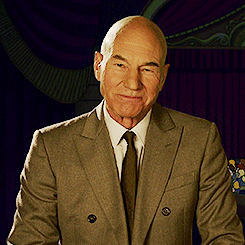
“Construcción del Personaje” Stanislavski.
Para muchos fanáticos del teatro, Stanislavski es la autoridad. Yo no lo creo así, ya que tengo la sensación de que sus estudiantes, y los estudiantes de sus estudiantes, le dan mil vueltas. Pero no podemos dudar que es el orígen de muchas reglas en el mundo del teatro. Además, él mismo dice que no hay que decir su verdad, sino nuestra verdad, y se lleva un diez por mi parte. ¿Stainislavski tenía complejo de psicólogo o es que en realidad el teatro siempre ha sido terapia?.
Como en la mayoría de sus libros, las técnicas e ideas que nos propone las descubrimos siguiendo la historia de sus estudiantes (inventados) cuando van a los ensayos de Tortsov (su alterego) y escuchan sus locuras. Seguimos por tanto los pensamientos de Kostya por cada uno de estos capítulos:
Hacia una caracterización física
Lo que más me gustó de este capítulo fueron las circunstancias en las que lo leí, porque el libro me hizo aprender a enfrentarme a ellas. Había comenzado mis estudios de interpretación textual poco después de que abrieran las puertas con la pandemia, cuando todavía existía gente preocupada de verdad que usaba mascarillas de verdad. Por aquel entonces, me ponía un poco triste, porque se escondían gestos y emociones preciosas tras las mascarillas, así que agradezco cada día el haber empezado a estudiar interpretación en esta época. “Los ojos pueden expresar toda la personalidad” (33), dice Stanislavski, y dice mi profe, y ahora también lo digo yo.
El contenido general del capítulo es también bastante interesante. La caracterización externa de los personajes se hace observando el mundo. Se extrae de tu experiencia vital, o la de tus amigos, o incluso la extraes observando un cuadro. La única condición es que cuando se esté llevando esa investigación externa, no perdamos nuestro yo interior (37). En resumen, observa el mundo y utilízalo en tu beneficio pero no seas una copia. Suena bien.
Vistiendo un personaje
Aquí Kostya se desespera cuando el grupo tiene que preparar una mascarada. No sabe qué llevar, con qué maquillarse, ni nada. No sabe quién quiere ser. Lo bonito de este capítulo es cuando sale del bucle de la desesperación y se deja llevar. Se convierte en un observador externo de sí mismo y lo más importante, disfruta jugando con los disfraces, maquillajes, etc, hasta que construye su personaje. Vestirlo se convierte en un ejercicio muy natural ya que es una simbiosis con él, pero sin perderse. En otras palabras, sacas al personaje de una de tus verdades. Por eso es tan importante conocerse a uno mismo. Y por eso mucha gente se engancha al teatro. Es una búsqueda preciosa.
Personajes y tipos
Lo mejor sin duda de este capítulo es esa pequeña bofetada que Torstov da a los lectores. Pensad por un momento: ¿cómo interpretaríais a un anciano? Con la espalda corvada o las gafas en la nariz. ¿Y a un aristócrata? Altanero y egocéntrico, ¿a que sí?
Bien, ¿y qué profundidad tiene eso? Son sólo clichés, no contienen la esencia del personaje ni están individualizados (60). Hay que escarbar mucho más para encontrar la verdadera definición de cada personaje. Olvidémonos de arquetipos, eso resulta insultante.
Además, también tiene para los personajes que somos nosotros mismos. Regaña a algunos actores, que no sienten la necesidad de preparar caracterizaciones porque adaptan sus papeles a su atractivo personal (54), pero nos recuerda que lo verdaderamente bonito es mostrar nuestros rasgos, buenos y malos, sin ocultarnos detrás de una imagen (65). Lo que yo entiendo de esto es que la máscara que nos pongamos en escena (sea real o una caracterización más mental), no es más que una herramienta para ayudarnos a explorar algunas de nuestras emociones más olvidadas. Kostya, por ejemplo, pudo sacar al “crítico”. Él no es arrogante ni gruñón, pero todos tenemos esas emociones en algún momento, y la caracterización del personaje le permitió explorarlas desde dentro y observarlas desde fuera.
Haciendo el cuerpo expresivo
Al actuar no debe hacerse ningún gesto porque sí (84), esa es la clave del capítulo. Pone por ejemplo a los bailarines de ballet. Adoptan posturas poco naturales intentando buscar una gran belleza. Sin embargo, eso no es actuar. Tiene que ser natural, sí, pero tiene que tener sentido.
Por otro lado, nos anima a explorar varias disciplinas para cuidar nuestro cuerpo. Del ballet mismo, por ejemplo, aprender a andar en quintas o hacer los splits en barra ayudan a colocar la cadera, proporcionan equilibrio, etc. Lo mismo para todo lo demás, hacer entrenamientos de fuerza ayudan al control y al equilibrio; los de cardio mejoran tu resistencia y educan tu respiración; y finalmente una dieta sana y medianamente abundante nos proporciona la energía que necesitamos. En otras palabras, el cuerpo es el instrumento del actor. Y, por mi parte, creo que deberíamos añadir aquí que el cuerpo es el instrumento de todo el mundo. Hasta donde podamos llegar, debemos cuidarlo.
Plasticidad de movimiento
Aquí el autor decide burlarse de todos nosotros. ¡¡No sabemos andar!! (93). No lo niego. Tengo la cadera desigual y los pies planos, claro que no sé andar!!! La gracia es que nadie sabe, porque nadie se fija. Pero, al actuar, cada movimiento tiene una reacción hacia otro movimiento, de forma infinita. Torstov hace que sus estudiantes imaginen jugar con una bola de mercurio, imaginando que la pasan por todo su cuerpo. Esto me recordó a alguna técnica del Tai Chi, y creo que sería interesante que todos pudiéramos practicarlo.
Restricción y control
Las emociones no siempre tienen que expresarse en su totalidad. De hecho, el contenerlas es lo más humano del mundo. Uno de los ejemplos que pone es cuando alguien está inmerso en un drama aterrorizador, algo que escapa a su control. Las lágrimas ahogan, su voz se quiebra, incluso puede quedarse paralizada. Con el paso del tiempo, va encontrando un espacio para soltar esas emociones fuertes hasta encontrar la calma para hablar de ellas.
Dicción y canto
Este capítulo analiza los rasgos de las vocales y las consonantes, y demuestra que aprender a cantar nos ayuda a mejorar nuestras aptitudes vocales. Sin duda, será algo que explorar en próximas entradas.
Entonaciones y pausas
La clave de este capítulo es la importancia del subtexto al reproducir el guión. Por ejemplo, la palabra "amor" puede no significar nada para una persona que no entienda español, pero si se llena de emoción, si se usa en el momento justo, su significado es infinito, y no necesitan saber esa lengua para entenderlo.
Curiosamente, puede ser lo más divertido de actuar, ya que está intrínsecamente relacionado con la pausa dramática, y no se me ocurre un mejor ejemplo que...

Acentuación: la palabra expresiva
En este capítulo, Torstov insiste en que reproducir el texto o transmitir una emoción no son los objetivos de un actor. Esas palabras y esas emociones deben provocar un efecto, o nada de lo que haga tendrá sentido. Aconseja hablar no al oído, sino al ojo de nuestro compañero en escena. Y esto, fuera de las explicaciones sobre efectos o no efectos, me parece un consejo CLAVE si estás en el teatro. Hay que saber reaccionar a lo que haga tu compañero, pase lo que pase.
Perspectiva en la construcción del personaje
Al irse desarrollando un personaje tenemos dos perspectivas: la del propio personaje y la del actor. Esto es crucial. El actor sabe lo que va a pasar con el personaje, pero el personaje no debe saber su futuro. Si bien es verdad que cada acción lo va a llevar a su objetivo y por tanto el actor debe recordar su futuro, no puede dejar que el personaje se mueva sabiendo exactamente lo que va a pasar. No sería realista.
Tempo – Ritmo en movimiento
Me temo que no voy a decir mucho de esta sección, ya que pretendo hacer contenidos con mayor profundidad sobre este tema.
Tempo del habla – Ritmo
Me temo que no voy a decir mucho de esta sección, ya que pretendo hacer contenidos con mayor profundidad sobre este tema. (Para seros sincera, en realidad me aburrí un poquito, pero shhh).
El Atractivo Escénico
Lo que más me ha gustado de este capítulo es la diferencia que hace entre dos tipos de personas embarcadas en el mundo escénico: Los guapis y los fachaditas. Creo que el primero se puede resumir con un “nunca conozcas a tus ídolos”. Un actor de este tipo puede permitirse de todo, incluso ser un mal actor. Su carisma está en el personaje que ellos venden a sus admiradores, no el personaje de la obra. Y cuando se acaba su belleza física, o cuando salen a la luz sus verdaderas intenciones, sus fans se dan de bruces con la decepción. Por otro lado, el segundo tampoco es el objetivo de un buen actor. Los que utilizan las fachadas pueden ejercer un gran magnetismo escénico entre kilos de maquillaje y pelucas, pero es importante ver lo que hay debajo también.
Hacia una Ética Teatral
Aunque dedicaré una entrada exclusiva con una lista de consejos sacados de aquí y otros que añadiré, os resumo: respeto, respeto, respeto. Respeto a tus compañeros, al texto, al superobjetivo, a los técnicos, a tu público, a la puntualidad, a la butaca medio rota. A TODO.
A través del consciente y hacia el inconsciente. + Pautas.
Junto los dos porque siento que van de la mano. El último parece un resumen de lo aprendido, pero el ante penúltimo es interesantísimo: Torstov propone a sus estudiantes jerarquizar todas las pautas que les ha dado. Atención, ¡tiene trampa!
\\
¿Qué crees tú que es lo más importante?
Si algo de lo que comparta es de tu interés o te ayuda, ¿te apetece invitarme a un café? Puedes hacerlo en el banner de kofi en esta página (o directamente en paypal.me/elenjaxxms) siempre que quieras y te lo puedas permitir.
¡Muchas gracias y hasta pronto!
#stanislavski#actress#acting#theatre#theater#thespians#teatreros#teatro#actuación#consciente#arte#personajes#construyendo al personaje#building a character
5 notes
·
View notes
Text
"Whereupon we went through a series of tests during which the quarter note was broken up into three parts, then four, six, twelve, sixteen, twenty-four and even a greater number of fractions in each measure." 🍵
0 notes
Text
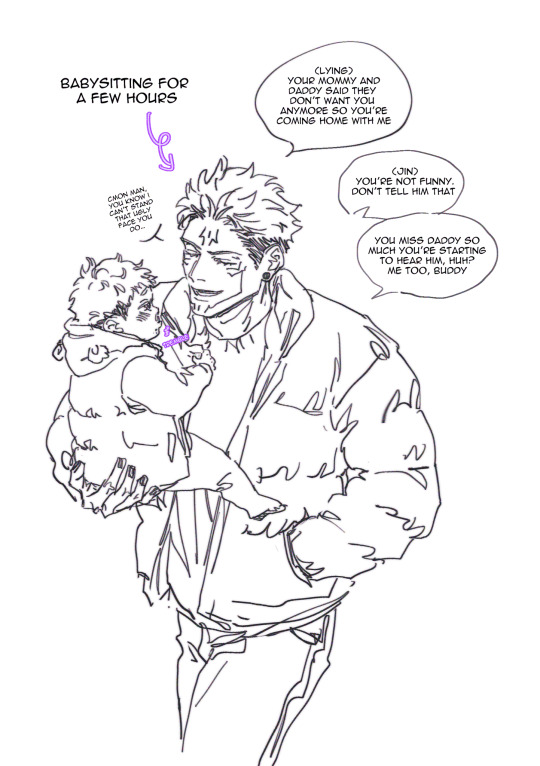
#jjk#jujutsu kaisen#fanart#my art#itadori yuji#ryomen sukuna#au#sketch#hes a bully but thats ok cus it builds character#unckuna au
7K notes
·
View notes
Text
So my problem with most ‘get to know your character’ questioneers is that they’re full of questions that just aren’t that important (what color eyes do they have) too hard to answer right away (what is their greatest fear) or are just impossible to answer (what is their favorite movie.) Like no one has one single favorite movie. And even if they do the answer changes.
If I’m doing this exercise, I want 7-10 questions to get the character feeling real in my head. So I thought I’d share the ones that get me (and my students) good results:
What is the character’s go-to drink order? (this one gets into how do they like to be publicly perceived, because there is always some level of theatricality to ordering drinks at a bar/resturant)
What is their grooming routine? (how do they treat themselves in private)
What was their most expensive purchase/where does their disposable income go? (Gets you thinking about socio-economic class, values, and how they spend their leisure time)
Do they have any scars or tattoos? (good way to get into literal backstory)
What was the last time they cried, and under what circumstances? (Good way to get some *emotional* backstory in.)
Are they an oldest, middle, youngest or only child? (This one might be a me thing, because I LOVE writing/reading about family dynamics, but knowing what kinds of things were ‘normal’ for them growing up is important.)
Describe the shoes they’re wearing. (This is a big catch all, gets into money, taste, practicality, level of wear, level of repair, literally what kind of shoes they require to live their life.)
Describe the place where they sleep. (ie what does their safe space look like. How much (or how little) care / decoration / personal touch goes into it.)
What is their favorite holiday? (How do they relate to their culture/outside world. Also fun is least favorite holiday.)
What objects do they always carry around with them? (What do they need for their normal, day-to-day routine? What does ‘normal’ even look like for them.)
49K notes
·
View notes
Text
James: Tell your brother that its important to talk about his feelings!!!
Sirius: pfft why?? Its not.
Regulus: SEE. We grew up just ignoring every feeling, and look how great we turned out!
James: THATS TRAUMA, YOU WERE REPRESSED-
Regulus: HAVE YOU EVER CONSIDERED THE POSSIBILITY THAT ITS JUST MY PERSONALITY, MY LIFESTYLE-
James: YOUR TRAUMA-
Regulus: TRAUMA BUILDS CHARACTER JAMES
#trauma builds character#-r.a.b.#jegulus#marauders#regulus black#starchaser#james potter#incorrect marauders quotes#the marauders#marauders era
2K notes
·
View notes
Text

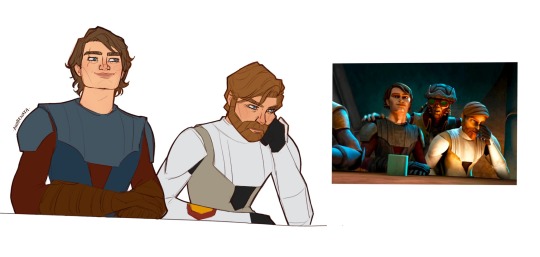
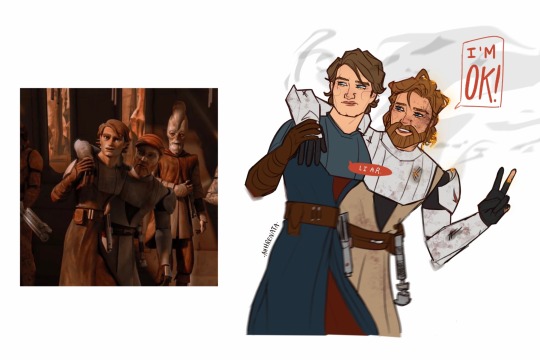
the screencaps that inspired these doodles
#i likes tweaking screencaps up a bit#its fun to switch expressions and hairstyles around#and when a screencap doesnt inspire.. random reference photos usually work.. i just slap the character faces on it and build from there#clone wars#star wars#anakin skywalker#obi wan kenobi#ahsoka tano#sw art#artblock still going strong so its just little warmup doodles lately 😅
5K notes
·
View notes
Text
A friend gifted me Gotham Knights on Steam after I expressed a vague interest in it. I believe my exact words were, "The color of the cover art is very cyberpunk bisexual, and I love that for them."
A lot of key smashing ensued, followed by, "No, wait, you have to play it, you have to. Don't ask why. You'll know when you see it."
After spending a substantial few hours with my new dopamine generator, zipping around Gotham as various different heroes, grappling my way across the skyline, and driving my motorbike into walls (sorry, random Gothamites.) I got to the part of the story where Dick Grayson is seen drinking from a bisexual-themed Bludhaven mug (WE WANTS IT, PRECIOUS, WE NEEDS IT), followed by Babs posting a gossip article in the literal batfam group chat (I have no idea when she actually sent it, I keep forgetting to check the chat lmao) where Dick fully leans into being Bruce's son by being the biggest, sluttiest fuckboy imaginable when the male interviewer asks Dick if he has a "type" then describes the way Dick drops his voice to an "intimate purr, his gaze for me and me alone" followed by the most bisexual response ever which can be summarized as "People are gorgeous. All of them. Why restrict myself to an archetype when the world is full of beauty?"
And can I just say, as a slutty, slutty bisexual *chef kiss* love that for him. That and all the nude photoshoot offers he seems to be getting lmao.
Combine that with the interactions where Tim talks to the batfam about his boyfriend, asking for relationship advice (Babs telling Tim she's hopeless with guys, so to ask Dick instead), Dick suggesting Robin and Nightwing should go to Gotham Pride in costume so people know the batman are firmly in camp LGBTQ+ (followed up by an email between Babs and Jayson where they talk about wanting to go to Pride to support Tim so he'll know they're proud of him), the rainbow flags in the living room, and the trans, bi, pan and I think non-binary flag (need to check, might be demisexual) bike color options, I can honestly say I'm having a lot of fun careering round Gotham like the most terrifyingly competent, backflipping, Solo Pride Parade that's ever swung out of the skyline to dropkick a cop into oncoming traffic.
#batfam#gotham knights#gotham knights game#this game is like playing crackfic#crackfic with the occasional bit of pure soul-destroying angst#it's quite clunky and a bit grindy#but as a character-driven gremlin I'm having the time of my life just fucking around and falling off buildings
4K notes
·
View notes
Text

littlest furth shop
@laikascomet
#i think i had a little too much fun with this lol#i also wanted to draw road boy and other characters but maybe when they actually get introduced#i do have a sketch of him with a lil chainsaw.. im not gonna be normal when he gets introduced man he looks so sillygoofy#if you squint laika's eye marking is a clover yue's is a crescent moon and mars' is a star ^_^#i wanted to give laika an accessory too but i couldnt think of anything.. maybe a stack of pancakes??#im curious to see the apocalypse side of the story too.. like so far we have an idea of the comet fucking everything up#and im assuming that lead to a ripple effect causing the apocalypse but exactly how bad?? i cant wait to find out#rn im kinda piecing stuff together.. larkspur delivers mail in a beat up van so that might mean all transportation is grounded#the buildings we've seen so far are intact like the observatory and turnip's house but idk if thats the same for big cities#laikas playlist only includes songs downloaded on yue's computer and there hasnt been internet in 20 years.. but radio signals might#still work.. if yue grows his own food we can assume that mass production and distribution also isnt a thing anymore#sorry im a sucker for worldbuilding.. and the furth puns are fun to me. i like to think toronto would be clawronto.. and vancouver wld#be nyancouver.. barktic circle.. mewfoundland and labrador.. canyada....#christ i have so many drawing ideas. willow if youre reading this im so sorry youre probably gonna expect to see a lot of drawings frm me#like. i wanna draw laika in the akira bike pose so sosososo bad. IT WOULD BE SO AWESOMECOOL. ill teach myself to draw bikes if i have to#i also wanted to animate laika leekspin.. man#my art#myart#fanart#laika's comet#laikas comet#laika#mars#yue#furry art#fur#littlest pet shop#lps
2K notes
·
View notes
Text

#set a building full of orphans on fire#created a portal into another dimension out of egotism#is (currently) trying to get into someone’s head to kill them#is trying to invader earth (same character also stole a bunch of peoples organs)#ate a kid reincarnated as a nome then ate a woman just because she was hungry#fed people children#slapped her sister which in turn made her sister a villain#I think it’s time for me to stop
10K notes
·
View notes
Text
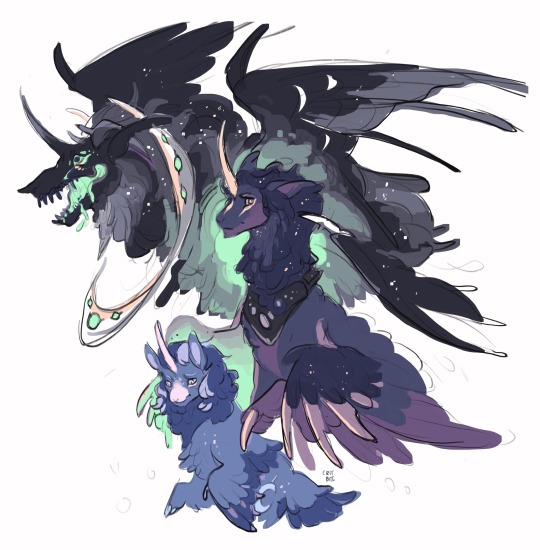
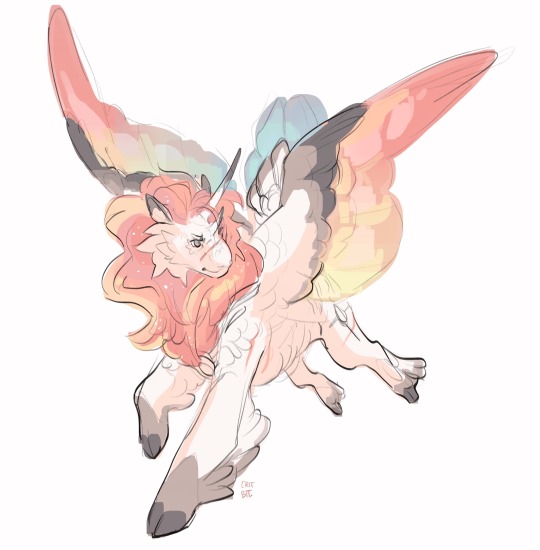
Me thinking about honses.
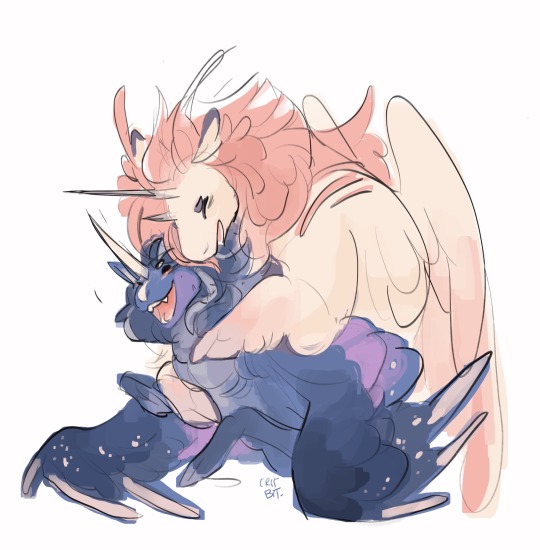
(Are they gods? Or unfortunate magical experimentations? When did the world blink, and they’ve grown— but not old, nor wise?

At least they’re sisters, and they have each other.
At least.
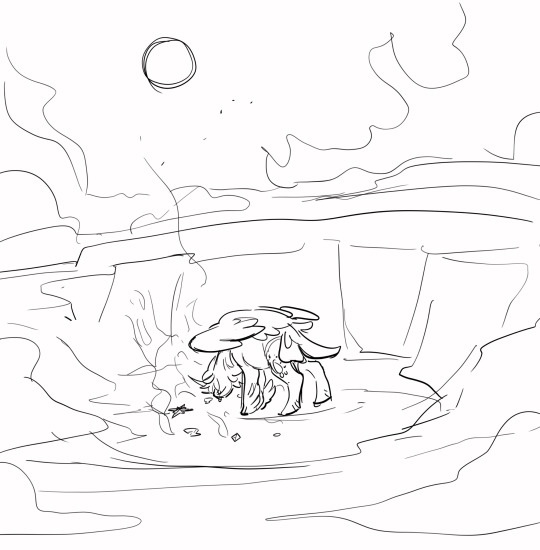
At least.)
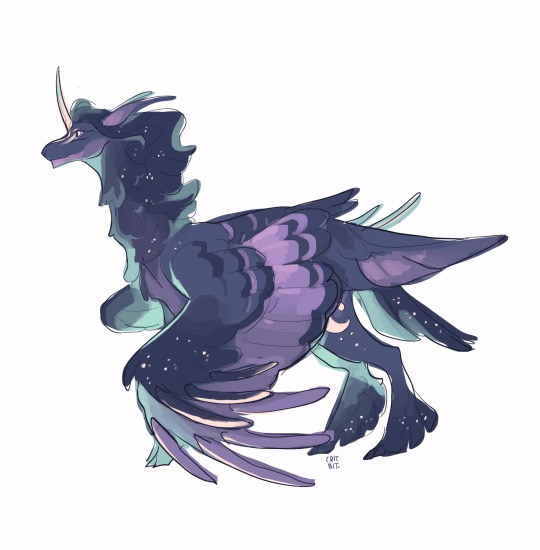

Anyways here’s my doodles for a possible luna and celestia! They’re ancient alicorns, ascended during a great war that would later shape equestria as a primarily pony continent. (The modern alicorns are made with love. The ancient alicorns are made with desperation. Nightmare Moon and Daybreaker are not accidents.)
#mlp#mlp redesign#critdraws#hey remember when I said I’m not a mlp artist#IM STILL NOT.#BUT LIKE#FUNNY HORSE SISTERS CAUGHT UP IN THE CYCLE OF VIOLENCE AND NEEDING MORTAL INTERVENTION TO BREAK FREE….#celestia mlp#luna mlp#nightmare moon#mlp luna#mlp celestia#alicorn#alicorn redesign#mlp world building#luna#celestia#myart#mlp gen 4#character sheet#art#MY SHORT CELESTIA PROPOGANDA COMES FORTH#Rest your Weary Hooves in our New Found Home
2K notes
·
View notes
Text
"the creator said in a reddit thread -" "the official twitter account posted that -" "the actors confirmed in a livestream that -"
i don't care and that's not real to me. put it in the text.
#for fun stuff like 'this character's favorite food is meatballs' im like cool but for worldbuilding and stuff? nah#i do understand some nuance with writers or w/e who were held back by corporate teams on confirming a character is gay or something#and wanting to talk about their hopes and intentions#but this is rly about the opposite with creative teams wanting the points for diversity or plot choices#or world building without putting it in the actual story#esp if its bc they just didn't want to piss off bigots or can't write well#sw giving backstory on the sith fleet situation in a TWEET will always be infamous to me#not st#doctor's log
1K notes
·
View notes
Text
"Can it be that the mere voicing of the count influences the smoothness of the raising or dropping of an arm?" 🍵
0 notes
Text
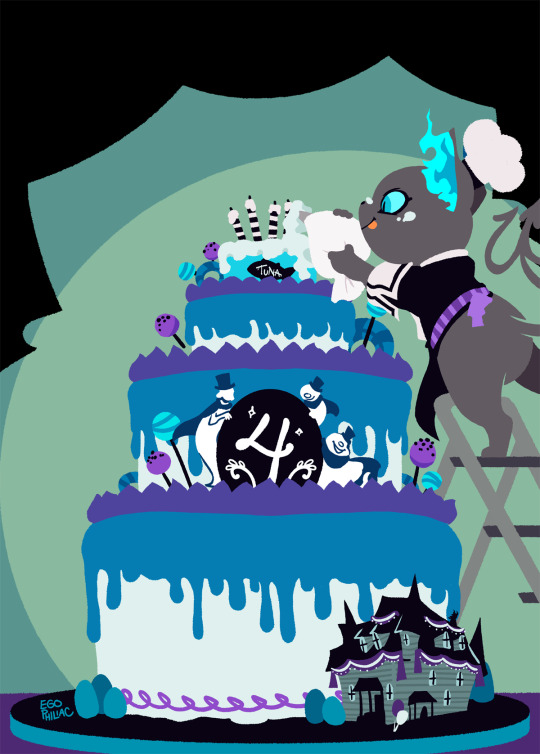
(almost) four years in, and I finally had time to draw something for the anniversary! woo! 🎉🎉🎉

#art#twisted wonderland#twisted wonderland spoilers#because i need to talk for a minute about how the plot of the anniversary story so far is literally just#crowley jumpscares us in our living room to demand we make him lunch and yuu is just like 'i need to start locking the door'#oh twst you always know just how to get me#the qol updates though! CONVERTING SINGLE KEYS INTO 10-SETS YES THANK YOU OH MY GOD#SKIP LESSON TICKETS!!!!#3X BATTLE SPEED!!!!!!!!!!!!#SAVE TEAM BUILDS AND SUPPORT CARDS FINALLY AHHHHH#oh and some other stuff too but look i NEEDED these things#also master chef grim! he's so precious!#though he's not going to get a little sporty uniform after all?#grim canonically flies in the nude i guess#no it's okay chef grim is ADORABLE#if you zoom in on his card you can see little smoodges from his inexpert cake decoration 😭#which on the one hand is cute but on the other hand i'd been convinced he'd just slapped some frosting and candles on an actual can of tuna#anyway happy (a few days until the) fourth anniversary everybody!#i've been here since the beginning (preregistered during the dorm reveals babyyyy) and it REALLY doesn't feel like it's been four years#you know what they say: time flies when you're watching anime characters have emotional problems
3K notes
·
View notes
Text
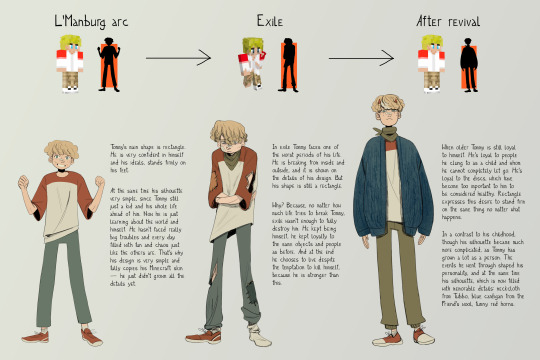
second part of my Dream SMP character design analysis because a lot of people liked that in my animatic. and now it's Tommy's turn!
(you can find first part with Wilbur's design here)
#tommyinnit#tommyinnit fanart#dream smp#dsmp#character design#art analysis#dsmpblr#lmanberg#lmanburg#l'manberg#l'manburg#digital art#digital drawing#fan art#fanart#dsmp fanart#character concept#character creation#character building
2K notes
·
View notes
Text
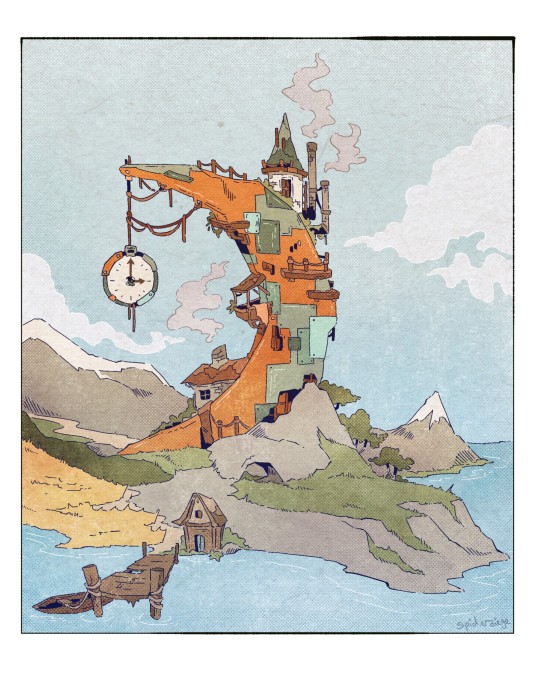
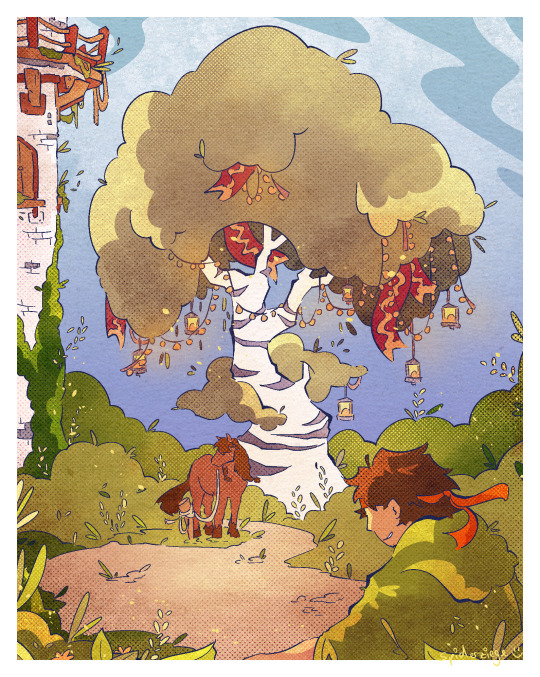
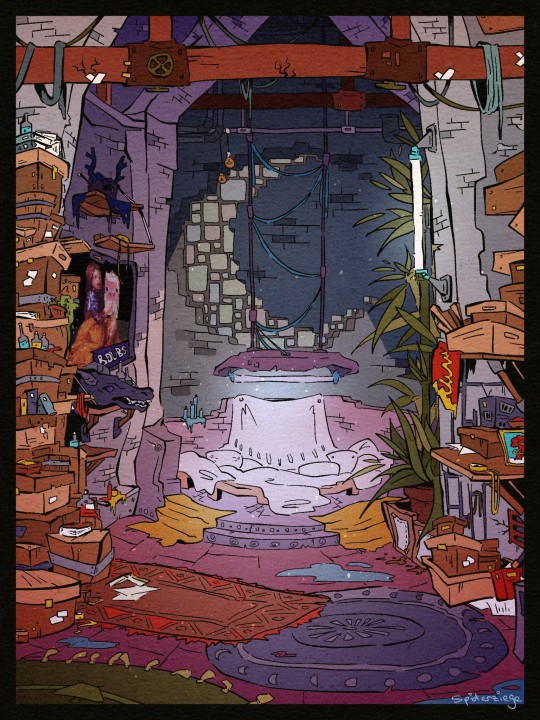
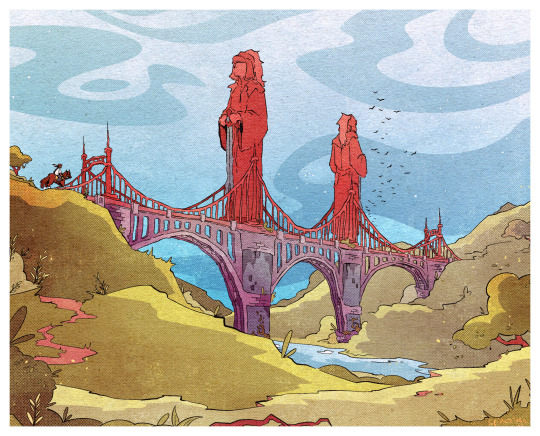

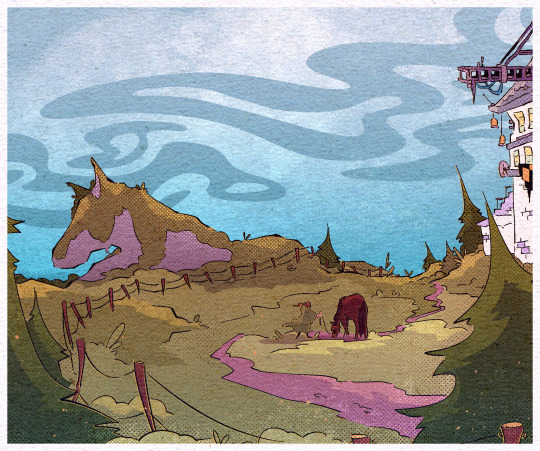
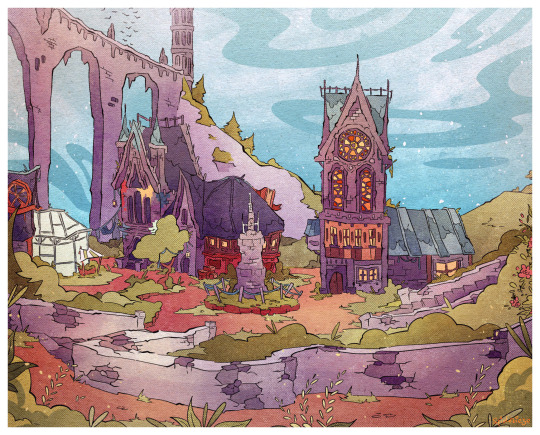

all bdubs builds ive drawn this year,,
#bdoubleo100#hermitcraft#building with bdoubleo#crimson brothers bridge & the moon throne room are probably my favorite drawings ive made so uuh. thanks for the inspiration bdubs#also i got this idea cause i saw some artists make those collections of every time theyve drawn a certain character#👍👍
2K notes
·
View notes